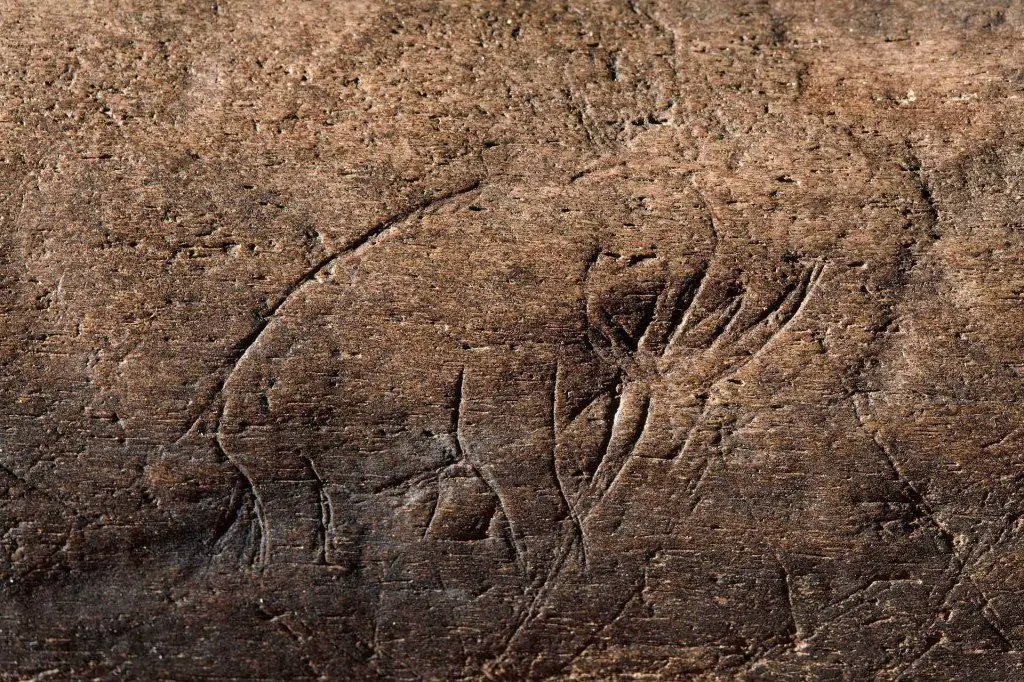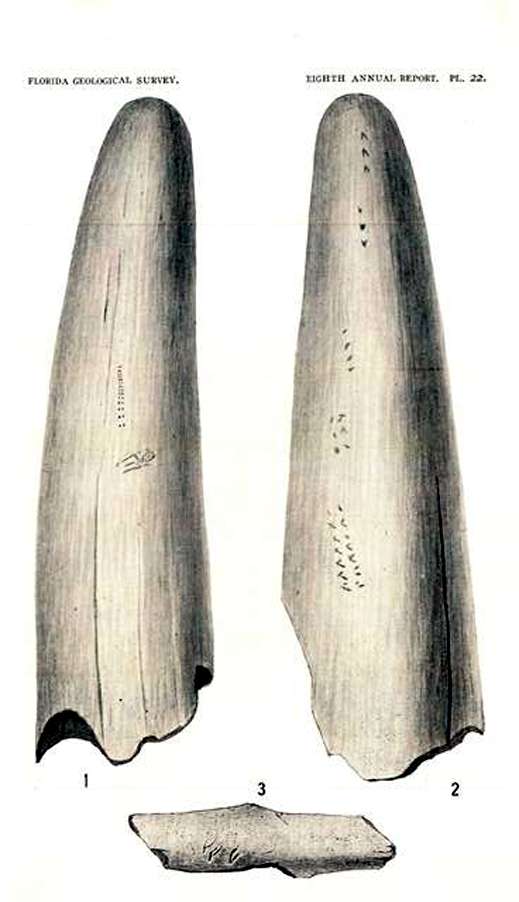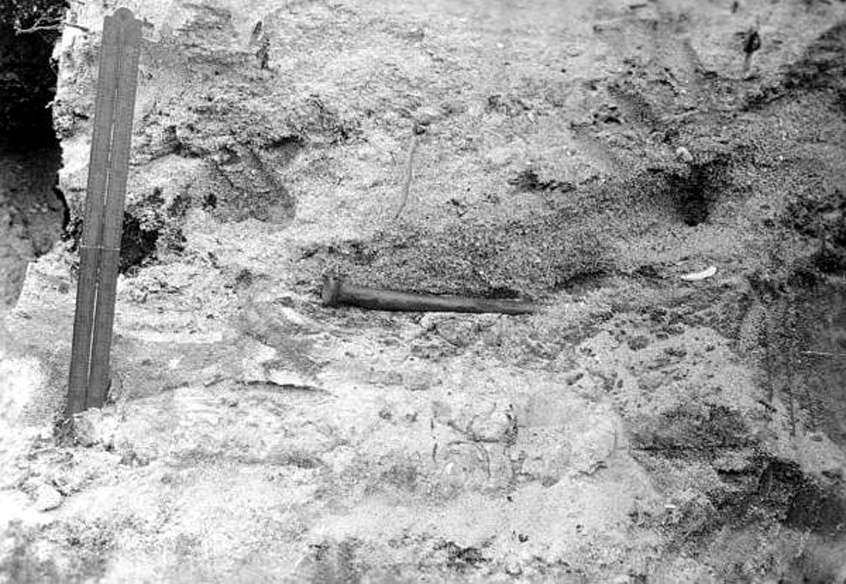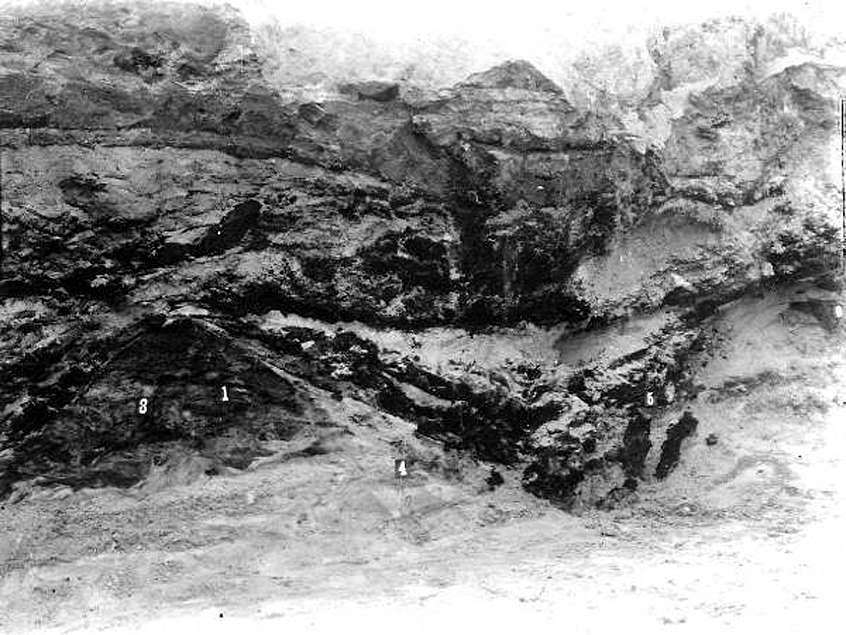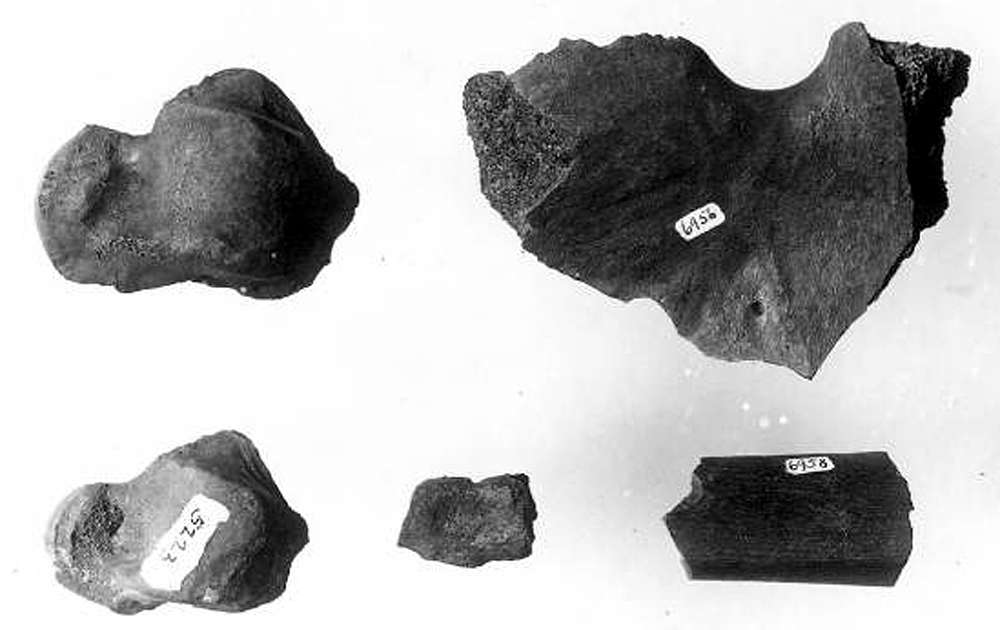Bluefish Caves and Old Crow Basin: A New Rapport
Jacques Cinq-Mars and Richard E. Morlan
Archaeological Survey of Canada
Canadian Museum of Civilization
Ice Age Peoples of North America.
Environments, Origins, and Adaptations of the First Americans, edited by Robson Bonnichsen
and Karen L. Turnmire, pp. 200-212. Corvallis: Oregon State University Press for the Center
for the Study of the First Americans.
Introduction
A cold, arid region known as Beringia played an unusually important role in the peopling of
the Americas. Stretching from eastern Siberia across Alaska to the Yukon Territory of Canada,
Beringia represented the gateway to the New World. During glacial advances, this region
served as a refugium for plants and animals, and evidence indicates that it was always available
as a rich habitat for human societies adapted to survive and prosper there. Beringia has played
a pivotal role in the evolution and dispersal of many organisms, and it is not surprising that it has
been the subject of special study by scientists in many disciplines and nations (e.g., Hopkins, et
al. 1982; Kontrimavichus 1984). Yet in many respects, Beringia remains little known and poorly
understood, and the archaeology of the region is one aspect that is still in its infancy.
This paper presents some of the principal conclusions of Pleistocene archaeological research
in the northeastern corner of Beringia -- the northern Yukon interior. This is an extensive area of
plateaus, uplands and ranges bordering several large lowland basins (Hughes 1972; Hughes, et
al. 1981). During the last two decades, the authors of this paper have conducted research in the
Yukon. One has focused his attention primarily on the uplands (Cinq-Mars 1978, 1990), while
the other has concentrated on the lowlands (Morlan 1980, 1984, 1986). At the present time,
neither of these areas provides a complete picture of late Pleistocene developments, but a
provisional outline can be glimpsed by integrating results of studies in both settings.
The paper begins with a consideration of paleoecological and archaeological findings at an
upland site known as the Bluefish Caves. The record at this site spans approximately
25,000 years, including a lengthy period during which the lowlands record appears to be
muted by events marking the final stages of a late Wisconsinan glaciolacustrine inundation.
More importantly, the archaeological evidence at the Bluefish Caves has been derived from
a primary depositional context that provides a degree of chronostratigraphic and taphonomic
control not yet available in the lowland region. The Bluefish Caves evidence enables us
to demonstrate human occupation in eastern Beringia during the height and decline
of the last glaciation. The implications of that evidence form a basis for reconsidering older
materials from the lowlands for which fewer controls are available. In this process of
reevaluating the evidence from both the uplands and the lowlands, we are aided by new
data from accelerator mass spectrometry (AMS) measurements on bone collagen.
https://www.academia.edu/5521801/Bluefish_Caves_and_Old_Crow_Basin_A_New_Rapport._Cinqmars_et_al._1999_
Jacques Cinq-Mars and Richard E. Morlan
Archaeological Survey of Canada
Canadian Museum of Civilization
Ice Age Peoples of North America.
Environments, Origins, and Adaptations of the First Americans, edited by Robson Bonnichsen
and Karen L. Turnmire, pp. 200-212. Corvallis: Oregon State University Press for the Center
for the Study of the First Americans.
Introduction
A cold, arid region known as Beringia played an unusually important role in the peopling of
the Americas. Stretching from eastern Siberia across Alaska to the Yukon Territory of Canada,
Beringia represented the gateway to the New World. During glacial advances, this region
served as a refugium for plants and animals, and evidence indicates that it was always available
as a rich habitat for human societies adapted to survive and prosper there. Beringia has played
a pivotal role in the evolution and dispersal of many organisms, and it is not surprising that it has
been the subject of special study by scientists in many disciplines and nations (e.g., Hopkins, et
al. 1982; Kontrimavichus 1984). Yet in many respects, Beringia remains little known and poorly
understood, and the archaeology of the region is one aspect that is still in its infancy.
This paper presents some of the principal conclusions of Pleistocene archaeological research
in the northeastern corner of Beringia -- the northern Yukon interior. This is an extensive area of
plateaus, uplands and ranges bordering several large lowland basins (Hughes 1972; Hughes, et
al. 1981). During the last two decades, the authors of this paper have conducted research in the
Yukon. One has focused his attention primarily on the uplands (Cinq-Mars 1978, 1990), while
the other has concentrated on the lowlands (Morlan 1980, 1984, 1986). At the present time,
neither of these areas provides a complete picture of late Pleistocene developments, but a
provisional outline can be glimpsed by integrating results of studies in both settings.
The paper begins with a consideration of paleoecological and archaeological findings at an
upland site known as the Bluefish Caves. The record at this site spans approximately
25,000 years, including a lengthy period during which the lowlands record appears to be
muted by events marking the final stages of a late Wisconsinan glaciolacustrine inundation.
More importantly, the archaeological evidence at the Bluefish Caves has been derived from
a primary depositional context that provides a degree of chronostratigraphic and taphonomic
control not yet available in the lowland region. The Bluefish Caves evidence enables us
to demonstrate human occupation in eastern Beringia during the height and decline
of the last glaciation. The implications of that evidence form a basis for reconsidering older
materials from the lowlands for which fewer controls are available. In this process of
reevaluating the evidence from both the uplands and the lowlands, we are aided by new
data from accelerator mass spectrometry (AMS) measurements on bone collagen.
https://www.academia.edu/5521801/Bluefish_Caves_and_Old_Crow_Basin_A_New_Rapport._Cinqmars_et_al._1999_



